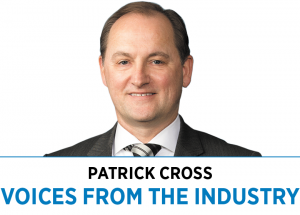Subscriber Benefit
As a subscriber you can listen to articles at work, in the car, or while you work out. Subscribe Now Winston Churchill famously said, “History will be kind to me, for I intend to write it.”
Winston Churchill famously said, “History will be kind to me, for I intend to write it.”
Emerging from the pandemic, health and life sciences companies have a unique opportunity to leverage lessons learned for the benefit of the patients they serve.
Based on a survey of Faegre Drinker’s health and life sciences industry team segment leaders, here’s a list of just a few HLS trend predictions that could help write the historical narrative of the pandemic’s long-term impact.
Speed and collaboration
During this pandemic, HLS companies have adapted to new ways of doing business—some of which were unthinkable a little more than a year ago—and many of them are likely to stick.
The most striking example was Operation Warp Speed, which set records for the speed at which vaccines were created, approved, manufactured, distributed and administered.
These successes resulted from an unprecedented public-private partnership that facilitated collaboration among competing HLS companies to find solutions to fight a deadly virus.
The HLS industry will benefit for decades from applying the results of the collective experience of these HLS companies, as lessons learned are applied more broadly to other vexing and time-sensitive health challenges.
Look for continuing collaboration among HLS companies and other stakeholders through public-private partnerships and strategic alliances to develop medical products, with new expectations that the FDA will expedite their approval while protecting patient safety.
SPACs
It’s hard to talk about HLS mergers and acquisitions without highlighting the proliferation of special-purpose acquisition companies, also known as “blank-check companies” (combining with a SPAC through a reverse merger is essentially an alternative to an IPO).
SPACs can provide HLS companies more efficient and quicker access to capital markets than a traditional IPO. The frenzied use of SPACs has slowed recently due to SEC scrutiny that has injected some uncertainty into the SPAC market.
Look for a rebound for SPACs after SEC questions and related accounting issues have been resolved.
Supply-chain opportunities
The pandemic highlighted the tension at the critical intersection between an expanding pipeline of therapeutic innovation in the United States and the pandemic-driven consensus that the U.S. must address severe supply-chain challenges in a number of sectors, including for some pharmaceutical active ingredients and finished products.
The Biden administration’s forthcoming recommendations under a presidential executive order will expand and accelerate the already-substantial federal resources being invested in this area.
These federal initiatives present a significant economic opportunity for Indiana’s life sciences economy, given its solid and growing base of drug manufacturing organizations.
Digital health
The use of computers, mobile devices, wearables and other biosensors to collect and store vast amounts of health data, and the use of telehealth and remote patient-monitoring technologies, continue to increase exponentially.
Under the framework established by the 21st Century Cures Act, look for increased use of “real-world data” from these sources in the regulatory decision-making process to support “real-world evidence” claims about the usage and potential benefits and risks of medical products.
Clinical trials
The pandemic has highlighted the need to rethink how HLS companies manage clinical trials.
HLS companies are now evaluating measures to speed up the development and approval process for products, including incorporating digital health technologies to improve clinical-trial matching (including the use of artificial intelligence), for virtual trial participation, where appropriate, and for real-time data collection to enhance monitoring and to provide greater insight into treatment effects.
Our collective experience during this pandemic has been difficult on many levels, and for some, it has been devastating. There are, however, important lessons from our recent history that hold great promise for fostering innovation and improving our lives.•
__________
Patrick Cross is a health and life sciences M&A partner at Faegre Drinker in Indianapolis.
Please enable JavaScript to view this content.
